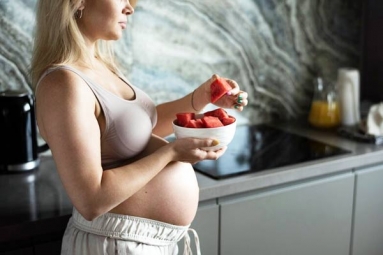
(Image source from: Canva.com)
Nutrients and calories are two different concepts in nutrition, although they are used interchangeably in the context of health and wellness. All foods have certain calories and nutritional value. According to experts, the lower the number of calories and the higher the nutritional value, the more foods should be included in the regular menu. Indianexpress.com spoke to health experts to understand the key differences between the two and which foods you should include in your daily diet. A calorie is a unit of energy provided by food. These measure the energy content of food and are essential for the function, growth and maintenance of the body. Calories are expressed in kilocalories (kilocalories). Nutrients, on the other hand, are substances in food that are essential for growth, maintenance and health. They provide energy, build or repair tissues and regulate body functions.
They can be broadly classified as follows:
Macronutrients: carbohydrates, proteins, fats
Micronutrients: vitamins and minerals
The main differences between calories and nutrients can be categorized as follows:
Purpose: Calories provide energy and nutrients to support growth, maintenance and health.
Type: A calorie is a unit of measurement while a nutrient is a specific substance.
Function: Calories provide energy for body functions, while nutrients serve multiple roles: energy, tissue building/repair, and regulatory function.
Nutrient and calorie balance is very important for a healthy diet. Here's a list of foods that are high in nutrients and low in calories and vice versa to get you started.
Nutrient-rich but low-calorie foods:
Green leafy vegetables – rich in vitamins A, C, K and minerals like calcium and iron – 1 cup cooked: 20-50 calories.
Vegetables – Rich in vitamins C and K, fiber and antioxidants – 1 cup cooked: 50-100 calories.
Fruit – rich in vitamins A, C, K, antioxidants and fiber – 1 cup: 60-80 calories.
Nuts and Seeds - Rich in Healthy Fats, Protein, Fiber and Minerals - 30 grams Nuts: 160-200 calories.
Chicken, poultry, fatty fish (salmon, sardines, tuna) - rich in omega-3 fatty acids, protein, vitamin D and B12 - 75-100 grams cooked: 180-200 calories.
Pulses and legumes (lentils, chickpeas, black beans) – rich in protein, fiber and minerals such as iron and zinc – 30g raw dal: 100 calories.
Whole grains (brown rice, millet, organic wheat) – rich in fiber, vitamins and minerals – 30 grams of raw grain: 100 calories.
Low-nutrient and high-calorie foods:
Sugary drinks (soda, juice, sports drinks) – high in empty calories and added sugar – 1 cup: 100-200 calories.
Refined grains (white bread, sweet cereals) – Low in fiber, vitamins and minerals – 1 slice/1 cup: 80-150 calories.
Processed meat – high in saturated fat, sodium and nitrates – 75-100 grams cooked: 200-300 calories.
Fried foods (fries, fried chicken, donuts) – high in calories, unhealthy fats and sodium – 1 serving: 200-400 calories.
Full fat dairy products (cheese, whole milk) – high in saturated fat and high in calories – 1 cup: 100-200 calories.
How can I balance nutrients and calories?:
Focus on whole, unprocessed foods, including a variety of colorful fruits and vegetables and lean protein sources (chicken, fish, legumes). Always choose whole grains over refined grains. Eat healthy fats (nuts, seeds, avocado) in moderation. And of course, limit your consumption of sugary drinks, processed meats, and fried foods. Consume 60 to 75 grams (raw weight) of whole grain products daily. Choose a protein source with 75 to 100 grams per day and make sure healthy fats make up 20 to 35 percent of your daily calories.



















